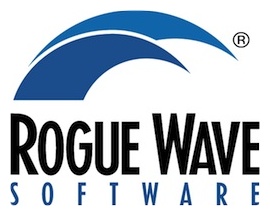 Today Rogue Wave Software announced their acquisition of Acumem, makers of productivity tools that pinpoint performance bottlenecks in multi-core applications. I was very familiar with Acumem from my time at Sun, so I caught up with Brian Pierce, CEO of Rogue Wave Software, to talk about Acumem and the future of software development for high performance computing.
Today Rogue Wave Software announced their acquisition of Acumem, makers of productivity tools that pinpoint performance bottlenecks in multi-core applications. I was very familiar with Acumem from my time at Sun, so I caught up with Brian Pierce, CEO of Rogue Wave Software, to talk about Acumem and the future of software development for high performance computing.
insideHPC: Rogue Wave has been around for a while, but what would you say your core mission is today?
Brian Pierce: We have a simple mission. We know that developing parallel, data-intensive applications is hard. We make it easier. That really sums up what we do for our customers.
So today, Rogue Wave is the largest independent provider of cross-platform development tools and embedded components for the next generation of HPC applications.
insideHPC: And what does that next generation of HPC apps look like?
Brian Pierce: We believe the answer is two-fold. First, it’s the idea that traditional HPC (the world of supercomputing) is seeping into the mainstream of computing. And that’s really driven by the increasing prevalence of the multiprocessor architectures out there and the need to develop software with parallelism in mind.
It’s also the notion that traditional supercomputing not going away, but is actually under more pressure to drive productivity higher. This is especially the case in our key market of financial services.
So our goal was to bring together a set of development tools that recognize and support these trends and to bring higher productivity to supercomputing. At the same time, we want to bring best of breed, cross-platform parallel development tools to mainstream IT.
So that’s the vision in a nutshell.
insideHPC: Last year, Rogue Wave acquired Visual Numerics and in January you picked up Totalview Technologies. Now you bought Acumem. Are these moves all along the same line then?
Brian Pierce: Absolutely. We continue to execute on our plan, and the acquisition of Acumem is the next step.
We’ve kept their offices in Sweden to extend our global footprint and we’ve asked their entire development team to stay on, including their CTO, Erik Hagersten. We’re very pleased to have Erik and his team, and they seemed pretty excited to be part of Rogue Wave.
This acquisition fleshes out our portfolio quite nicely. What was missing was profiling and performance tools and we really felt like we had to go find something to round out a complete tool chain around HPC development. And that’s when we found Acumem.”
insideHPC: What was the key thing you saw in Acumem for fleshing out your vision?
Brian Pierce: What’s great about their products, TheadSpotter, SlowsPotter and SpotLight is that they take an incredibly difficult aspect of parallel development and make it much, much simpler and more straightforward. Again, this fits not only in the HPC tool chain side of things but also takes the complexity out of the process.
Most traditional profiling tools collect a vast amount of information and metrics, but they leave it up to the developer to interpret those metrics and figure out how to remedy the situation. So I think the differentiator with Acumem and the thing that really caught our attention was that it actually suggests how performance bottlenecks can be removed. Acumem automatically analyses how well the application makes use of the target multicore architecture, pinpoints the performance problem, and suggests the necessary fixes in the code.
So we’re very excited to have them aboard. With all of these products, we believe that the experts in performance tuning can be more productive and now even the non-experts can actually optimize their code. And since we’re approaching the non-experts in the mainstream IT that are having to deal with these multicore architectures, we think we have a very easy tool to use.
insideHPC: With the convergence you mentioned of HPC and mainstream IT computing, how do you plan to prepare for the many-core future?
Brian Pierce: We do that by continuing to bring together a portfolio that marries the high performance computing with high productivity computing. And because it’s so prevalent in both, we bring in the ability to do complex data analysis.



